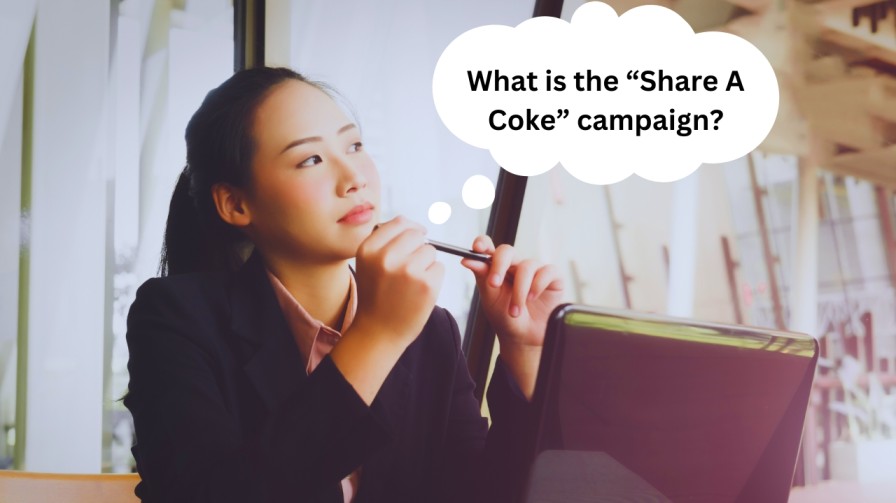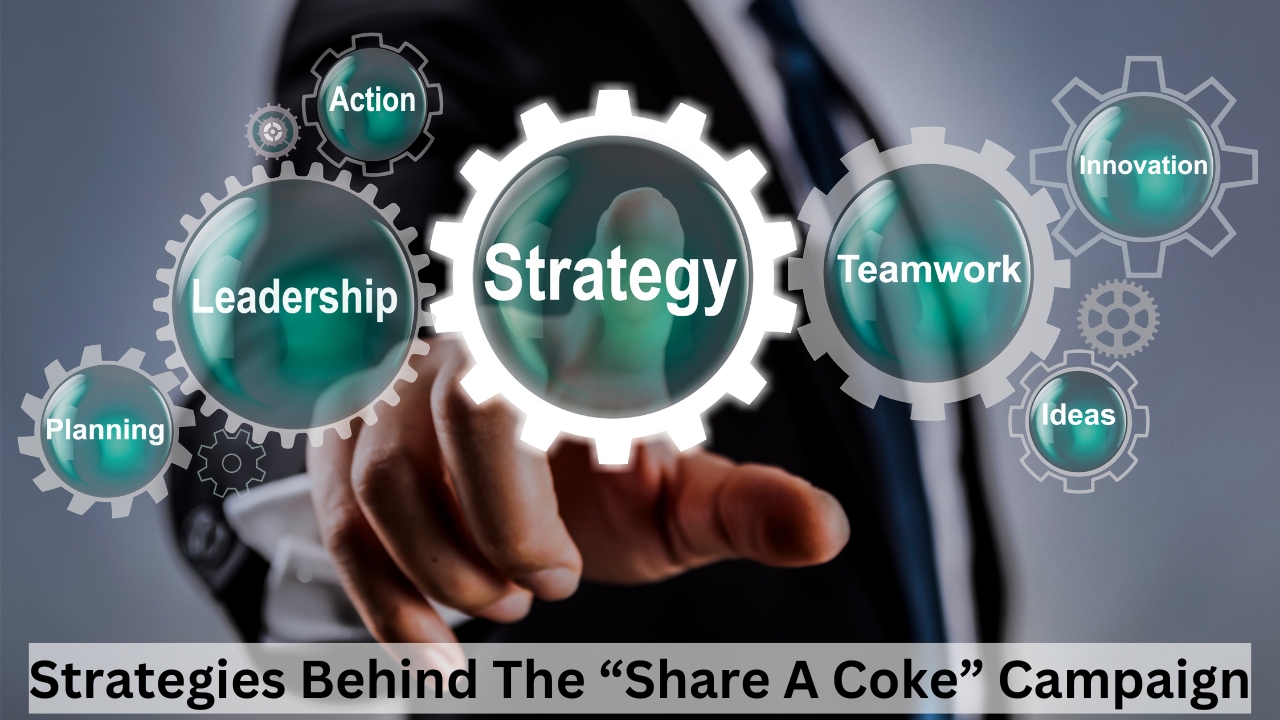
Imagine entering a store and finding a Coke bottle with your name. How would that make you feel? The ‘Share a Coke’ campaign did just that and made this simple gesture into the most iconic marketing campaign ever. This campaign didn’t just sell drinks. It sold the joy of sharing, leading to over 18 million social media impressions globally, and Coca-Cola became the most talked-about brand on Facebook. This campaign started in one country and quickly became a worldwide trend. But what made this campaign so iconic and successful?
The goal of the 'Share a Coke' campaign
According to the Brand Directory, in 2010, Coca-Cola was ranked 4th as the world’s most valuable brand. But the very next year, it came to the 2nd. But is gaining and staying in the world’s top position easy without something historically memorable in a marketing campaign? So, in that need, in the winter of 2011, the team at Coca-Cola South Pacific gathered in a cozy Sydney conference room. The top 5 marketing agencies presented their ideas in a meeting. They called it “Project Connect.”
At last, after a 151-word pitch, Coca-Cola had found its perfect campaign. (Coca-Cola’s Share a Coke Campaign | Case Study | Smith Brothers Media, 2022) There were some aims behind this campaign-
- Boost sales
- Reaching to the young audience
- Increase brand engagement
- Enhance Social Media Presence
- Global Connection
They would like this campaign to become a widespread platform on which consumers will think of the brand as their own and love it more and more.
What is the “Share A Coke” campaign?

The “Share A Coke” campaign was more than just marketing. Coca-Cola tried to connect with consumers on a personal level. They researched and found out that more than 33.3% of businesses rarely or never create customer personas to drive their decisions. Making personal connections with consumers was the biggest trump card they played in this marketing campaign.
- Name Replacement: Coca-Cola decided to use the most common people’s names on their labels and cover of the cans instead of its well-known symbol.
- Personal Connection: People were excited to look for bottles with their names or our friends and family members’ names.
- Shareable Moments: The campaign encouraged people to share these particular bottles with others and create shareable memories.
- Social Media Sharing: Those who want to personalize their bottle could do so. People were encouraged to share their pictures with the personalized bottles on social media with the hashtag #ShareaCoke.
- Customization Options: Later on, the campaign went a notch higher to cover even nicknames and custom names, which were also available through online orders.
- Global Expansion: Initially, the campaign was in Australia. However, the campaign expanded to other countries due to the positive results.
Strategies Behind The “Share A Coke” Campaign

Coca-Cola followed some basic but very effective strategies in this campaign. They finalized the “Share A Coke” campaign, and Lucie Austin, marketing director of Coca-Cola South Pacific, said: “We are using the power of the first name playfully and socially to remind people of those in their lives they may have lost touch with or have yet to connect with. We’ve put names on Coca-Cola bottles so consumers will have fun finding their friends and family members’ names and then enjoy sharing a Coke.” (Local Idea Goes Global: Share a Coke)
To make it more informative for you, we are dividing those into four significant steps-
1. Multichannel Rollout
Coca-Cola’s ‘Share a Coke’ campaign used newspapers, TV, social media, and Facebook. Users sent SMS messages with friends’ names, displayed live on the Coca-Cola sign at Sydney’s King’s Cross. They received an MMS of the display to share on Facebook or email, creating memorable customer connections.
2. Encouraging people to get involved by creating an online media campaign
Coca-Cola’s campaign targeted active online users, encouraging them to create and share brand content. This approach led to widespread engagement on Facebook, Twitter, and Instagram, fostering personal connections and promoting the brand creatively.
3. Engaging with customers personally
Coca-Cola connected with customers emotionally through personalization. The campaign encouraged sharing name-branded bottles, honoring loved ones. This sparked personal content, widespread engagement and boosted promotion with the #ShareACoke hashtag.
4. Strong calls to action in the campaign
Coca-Cola’s “Share a Coke” campaign had a powerful Call to Action. It encouraged people to buy Coca-Cola and share moments with friends and family on social media. The catchy slogan made the Call to Action memorable and immediately recognizable when purchasing the brand.
How Successful was the “Share a Coke” campaign?

According to a report from Cascade Strategy, you will be shocked to know that in 2011 Coca Cola spent 3.3 billion US dollars on the “Share a Coke” campaign. The returns on those investments will amaze you even more.
- Historic Achievement: The ‘Share a Coke’ campaign was groundbreaking in Coca-Cola’s 125-year history.
- Launch Details: The campaign began in 2011, featuring 250 of the leading common names in Australia on the bottles.
- Growth in Consumer Base: Australian-based advertising agency Ogilvy used observation to estimate that the ‘ShareACoke’ had grown Coke’s consumer base by 4%, including a census analysis that showed that 7% increased the target group.
- Global Expansion: As a result of the adverts, the campaign was made wider and was later situated in 80 different countries across the globe (Share a Coke Campaign: Analysis & Purpose | StudySmarter)
- Award Recognition: The campaign’s success enabled it to clinch seven awards at the 2012 Creative Effectiveness Lion Awards in Cannes. It also got the 2012 IAB Awards | Social Media Marketing Winner.
- Sales Boost in the UK: Tokinomo published a report stating that Coca-Cola gained a 2% increase in sales in the UK, which is equivalent to 1,265,200 out of the total population in the UK.
- Expansion of Names: In 2015, brand owners even included 1,000 names on bottles, some fun names such as “bro,” “better half,” and “sidekick.”
- Music Collaboration: As the organization developed a creative campaign, it was decided to include 1000 songs bearing the Coca-Cola name.
- Publicity and Success: Publicity was even higher than in previous campaigns, and “Share a Coke” was a significant publicity success.
- Trendy: According to IAB Australia, Coca-Cola has become the most curious for Australia’s Facebook page and 23rd global position.
"Share a Coke" Social Media Marketing Triumph
Social media played the most vital role in Coca-Cola’s tremendous campaign success. Using the public’s name on the bottle’s logo made consumers feel personally attached. People eagerly searched for their names in the bottle. Consumers shared stories of their experiences on social media. They shared their feelings by sharing pictures of this Coke on social media and also used hashtags like #Coca-Cola and #ShareACoke. In 2011, “Share a Coke” earned more than 18 million social media impressions. Coca-Cola has prioritized social media a lot, and it has exposed Coca-Cola consumers to their best moments with Coca-Cola. Over 500,000 photos were shared using #ShareACoke in the first year. Consumers created 6 million virtual Coke bottles on social media and grew to nearly 25 million Facebook followers (MonicaP, 2022).
The campaign was so popular that it expanded to many countries worldwide, creating 1.5 billion personalized bottles and over 100 million social media interactions.
"Share a Coke" Campaign Effectiveness
Through this campaign, Coca-Cola was leading towards high figures in the marketing world. Coca-Cola sales have never grown at this rate before-
- Unimagined Growth: The ‘Share a Coke’ campaign, a stroke of marketing genius, catapulted Coca-Cola into a realm of unprecedented success, with sales rates that surpassed anything the company had seen before.
- High Revenue: The campaign raised over $4 billion in its first year, and the app aimed for $6 billion in profit, proving its efficiency in boosting sales.
- Global Reach: The promotion was distributed to 200 countries worldwide, making it one of the largest and most successful marketing strategies in the world.
- Musical Influence: The campaign created over a thousand songs about Coca-Cola, such as Oprah by Roy Ayers, Lean on Me, Bottles of Coke, We Are the Champions, and many others.
- Emotional Connection: Coca-Cola’s ‘Share a Coke’ campaign was not just about selling a product, but about creating a deep emotional bond with consumers. By understanding their thoughts and feelings, the brand made consumers feel like it was theirs.
- Social Media Success: This campaign created a frenzy on social media, especially with the use of the hashtag #ShareACoke, which saw millions of posts on every form of social media.
- Youth Appeal: Therefore, by appealing to the younger generation and using popular names and content, Coca-Cola was able to attract the interest of teens and young adults to the drink.
Coca-Cola's Financial Effects
A pre-horizon analysis prepared by Coca-Cola’s management indicated that the company’s market value would reduce after a period. As a result, after creating the “Share a Coke” campaign, it has even increased its sales level. If we had analyzed the sales, we would understand the difference from 2007 to 2015, with the improvement after the campaign. Before 2007, the Coca-Cola company had been selling € 509,345,015. The trend in 2008 fell slightly, reaching the figure of €238 338 354. In 2009, the sales declined to this figure of €193,439,420. Total sales in the year ended 31 December 2010 were nearly euro 225,719,932. (The Coca-Cola Company Releases 2007/2008 Sustainability Review, n.d.)
Thus, the sales percentage reduction from 2007 to 2008 was a significant 53 percent. The rate of decline in the number of active ports from 2008 to 2009 was a substantial 18 percent. In 2010, the growth rate was a promising 16%. The three main sectors of the economy identified above also experienced economic growth in the same year. This growth, though significant, pales in comparison to the impact of the ‘Share a Coke’ campaign, which was a pivotal event for the Coca-Cola Company and indeed everyone involved. This campaign, introduced in 2011, marked a turning point in the company’s sales trajectory.
Year | Financial Results (Million U.S Dollars) |
2011 | 46,542 |
2012 | 48,017 |
2013 | 46,854 |
2014 | 45,998 |
2015 | 44,294 |
The company’s sales in 2011 were 46,542 million U. S. dollars. € 1,612,801,369 is the difference between 2010 and 2011. 82. This campaign had the highest Worldwide sales with a market value of 48,017 million U.S. dollars in 2012. As for the fiscal year 2011 to 2012, this figure rose to 1,475 million U. S. dollars (Coca-Cola Reports Full-Year and Fourth Quarter 2011 Results | Press Release)
Learnings From “Share A Coke” Campaign
- Campaign Success: Coca-Cola’s ‘Share a Coke’ campaign is one of its best. It showcases how a renowned brand can engage consumers by personalizing its logo with names.
- Personalization Impact: Personalization is most effective when it’s shareable, motivating customers to engage and explore their creativity through customization.
- Social Media Role: Social media, a pivotal element in impactful campaigns, provides customized platforms that are mutually beneficial for consumers and companies.Personal Connection: The campaign connected with consumers personally, enhancing its success.
- Digital Marketing: Marketing is increasingly digital and tech-savvy. Explore opportunities in digital marketing for business and career growth with our Certified Digital Marketing Master Program.
Conclusion
The ‘Share a Coke’ campaign was more than a marketing strategy. It was a celebration of connection and personal moments. Coca-Cola replaced its image on cups with names, which turned a mere drink into a moment of happiness and social interaction across the globe. That is why this outstanding campaign not only increased Coca-Cola consumption but also helped it become the icon of popular culture. It shows the effectiveness of targeting customers’ emotions in the marketing process. Even though the ‘Share a Coke’ campaign was effective, it is essential to appreciate the importance of new approaches. This is how the Coca-Cola brand has repeatedly proved capable of delivering messages that people from all walks of life could easily relate to.










